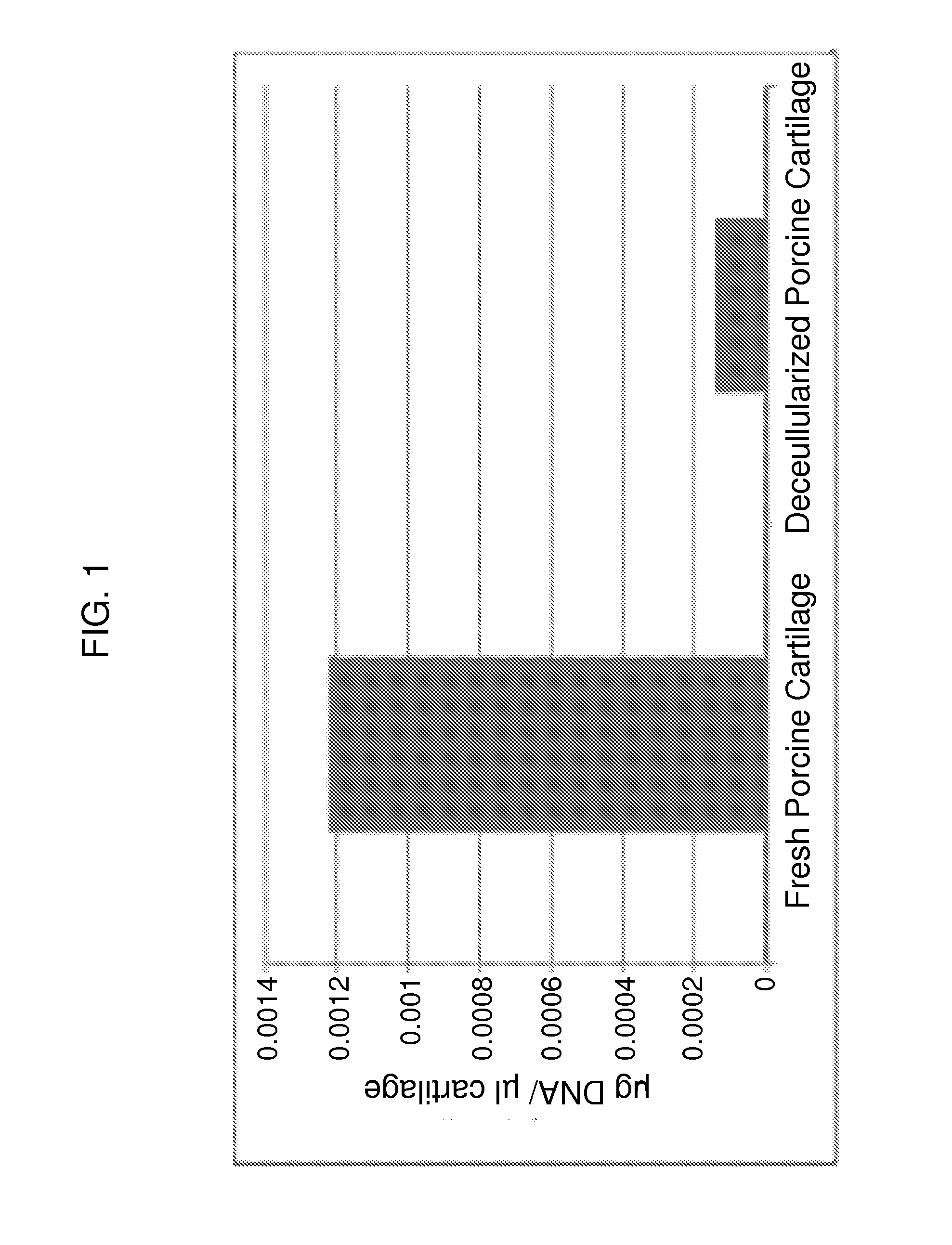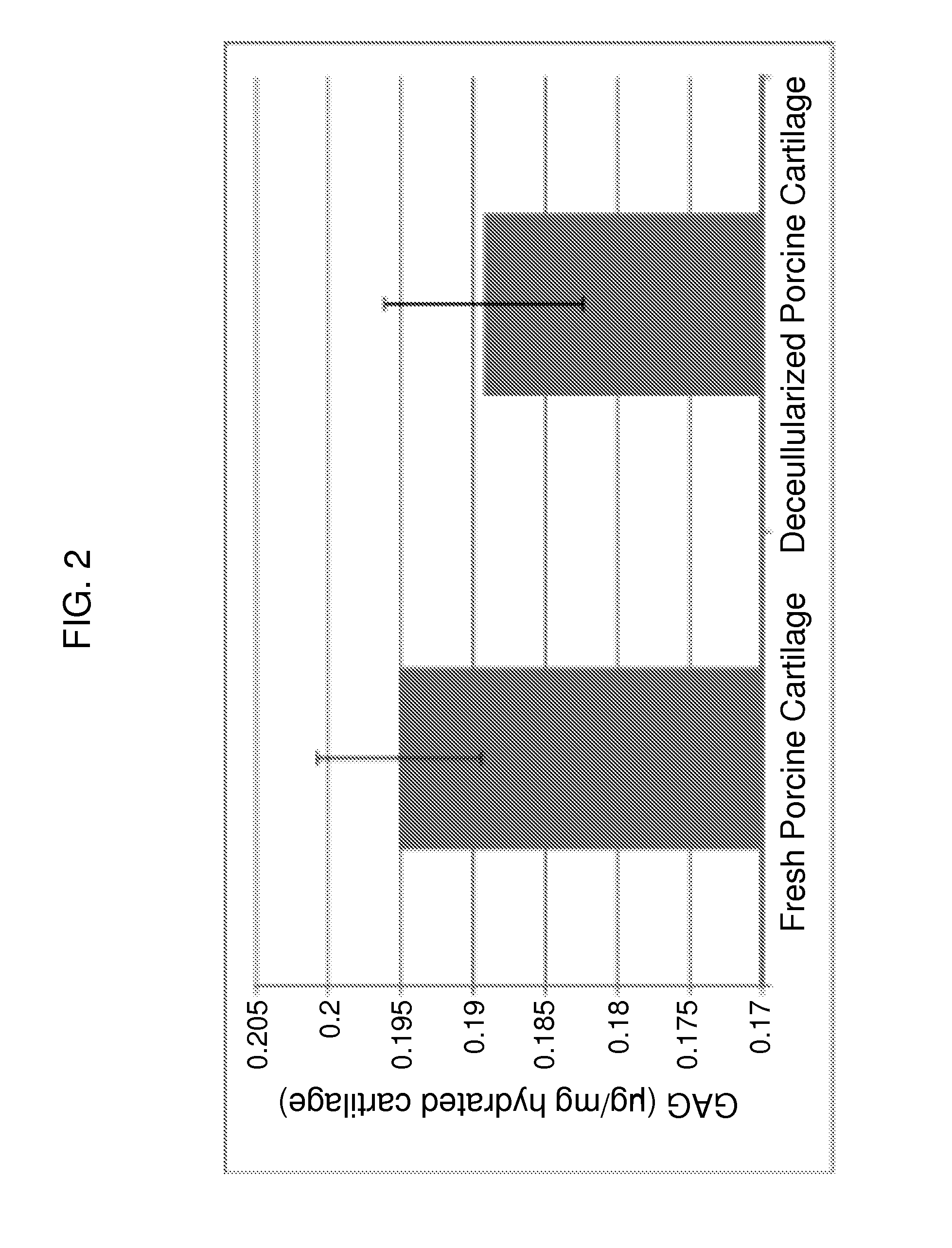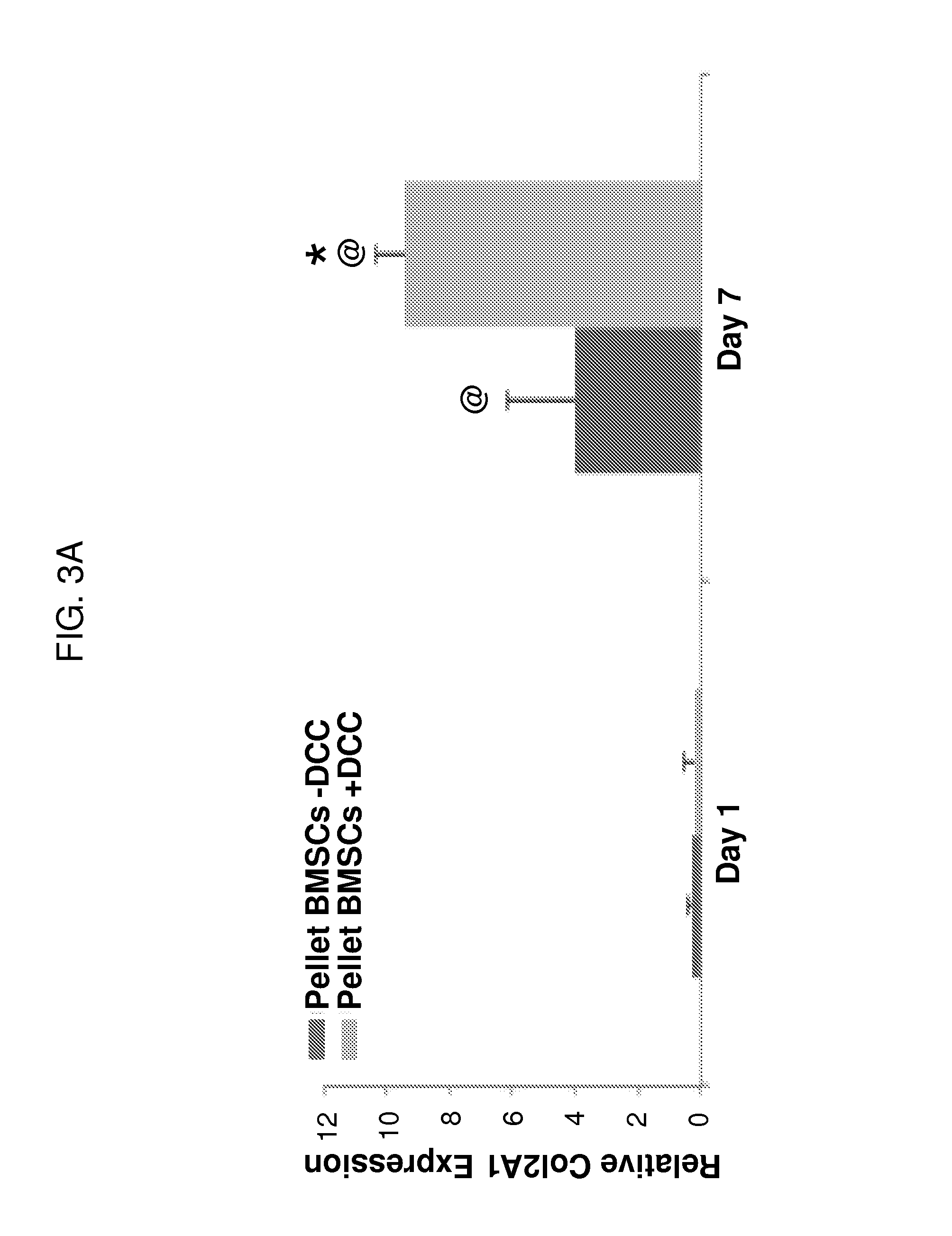Decellularized hyaline cartilage powder for tissue scaffolds
a technology of cartilage scaffold and hyaline, which is applied in the field of cartilage tissue powder compositions, can solve the problems of affecting the repair process, and exhibiting poor intrinsic healing ability of cartilage, and achieves the effect of facilitating the removal of cells and cell debris
- Summary
- Abstract
- Description
- Claims
- Application Information
AI Technical Summary
Benefits of technology
Problems solved by technology
Method used
Image
Examples
example 1
[0078]This example illustrates one embodiment of the cartilage tissue decellularization process of the present invention.
[0079]Materials and Methods
[0080]Solutions Used:[0081]a. Triton X®-100 (Triton): 0.05% (v / v) Triton X®-100 solution a 1:2000 dilution derived from 100% Triton X®-100 detergent (Sigma T8787) in ddH2O. For 2 L use 1 mL 100% Triton-X®, 1999 mL ddH2O. In general, a graduated cylinder was filled with deionized water and placed on a stir plate. A magnetic stir bar was added. The Triton-X was then added and the stir plate was turned on and the speed increased until the Triton-X began to mix with the water. The mixing was continued until the Triton-X was dissolved. The solution was transferred to a beaker containing the remaining amount of deionzed water and placed on a stir plate. A magnetic stir bar was added and the two solutions were mixed until they were combined. The beaker was transferred to a laminar flow hood before being sterile filtered.[0082]b. N-lauroylsarcos...
example 2
[0094]This example illustrates the methods of making decellularized cartilage tissue powder, and the characterization thereof.
Materials and Methods
Animals
[0095]All animal procedures were carried out under protocols approved by the Institutional Animal Care and Use Committee and animals received humane care in compliance with the Guide for Care and Use of Laboratory Animals (NIH Publication #85-23). Fresh bovine knee joints were obtained from a local abattoir within 24 hours of sacrifice. Articular cartilage was excised, washed with phosphate buffered saline, cryopreserved for storage until use.
Tissue Pulverization
[0096]The cryopreserved cartilage tissue was first pulverized into a coarse powder, or fragments, to decrease diffusion distances required for the decellularization solutions.
[0097]A decellularization technique previously developed was used in this study to remove cellular and nuclear material, thereby reducing potential antigenicity. The tissue fragments w...
example 3
[0113]This example illustrates the use of the powderized decellularized cartilage and the characterization of the resulting paste, or gel, or hydrogel composite. The ground (or powderized) decellularized tissue was solubilized in 0.1M HCl at a concentration of 10 mg DCC per 1 mL HCl. Pepsin was then added at a concentration of 1 mg / mL. The powderized DCC was digested in this solution for 1 day to 2 days, which length can be adjusted to give desirable rheological properties, i.e, the longer the solubilization period for the powderized DCC, as provided herein, the higher the yield stress from the resultant solution. After the digestion period, the solution containing the powderized DCC (SDCC) was brought back to physiological pH by adding 1M NaOH ( 1 / 10th of the original solution volume) and then back to osmolarity by adding 10×PBS ( 1 / 10th of the final neutralized volume). All steps for making SDCC were performed at room temperature at 21° C. The SDCC was then centrifuged at 10,000 R...
PUM
| Property | Measurement | Unit |
|---|---|---|
| size | aaaaa | aaaaa |
| size | aaaaa | aaaaa |
| size | aaaaa | aaaaa |
Abstract
Description
Claims
Application Information
 Login to View More
Login to View More - R&D
- Intellectual Property
- Life Sciences
- Materials
- Tech Scout
- Unparalleled Data Quality
- Higher Quality Content
- 60% Fewer Hallucinations
Browse by: Latest US Patents, China's latest patents, Technical Efficacy Thesaurus, Application Domain, Technology Topic, Popular Technical Reports.
© 2025 PatSnap. All rights reserved.Legal|Privacy policy|Modern Slavery Act Transparency Statement|Sitemap|About US| Contact US: help@patsnap.com



